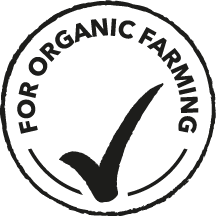
Grain
Grain is a staple food, animal feed material, as well as a renewable raw material. Global grain production is of international concern; cultivation and production are permanently recorded since these are indicators of the global supply situation. Good harvests are therefore important. The EU has been an international leader in wheat production for years, not least on account of the yields per hectare achieved. Sustainable and balanced fertilization is an important production factor here.
Grain cultivation – nutrient efficiency needs balance
Knowing the interaction between nutrients is a prerequisite for exploiting nutrient efficiency, especially in grain cultivation. This approach helps to conserve resources and protect the environment, while maintaining good harvest quality.
- Balanced fertilization ensures high yields and protein content in quality grain.
- Nutrient balances – potassium fertilization has a positive effect on nitrogen uptake.
- Magnesium increases root growth – a major plus in drought conditions.
- Sulfur has a variety of functions in protein metabolism and therefore safeguards grain quality.
Fertilize cereals correctly – harvest quality
Besides its use as food and animal feed, the importance of grain as a renewable raw material for energy and fuel production is increasing. The required quality of grain depends on the utilization.
A large part of the quality criteria can be positively influenced by fertilization. It is therefore important to adjust potassium, magnesium, and sulfur fertilization as well as the supply of micronutrients in addition to optimized nitrogen fertilization. Grain quality is defined according to the direction of utilization.
The most important nutrients for grain
Potassium – essential for grain yield
The grain yield results from the crop density (number of ear-bearing stalks per square meter) and the individual ear yield (number of grains per ear and thousand-grain weight, TKW). These parameters can be influenced by targeted fertilization.
- Potassium supply has a decisive influence on the water balance of the plant. With optimum potassium supply, water can be used efficiently by the plant and converted into yield.
- With the improved formation of assimilates in the leaves and their faster transportation into the grains, as well as a balanced water balance, the TKW can develop optimally.
- Potassium increases the cell strength of the plants. This reduces susceptibility to storage and fungus, which in turn has a positive effect on yield.
Securing grain yield and quality with magnesium and sulfur
Magnesium – a quality indicator for cereals
- Magnesium is effective both in the vegetative growth phase and in the grain filling phase.
- During the rapid youth development of cereal plants, magnesium ensures the formation of leaf green. It also ensures the early development of spikelets and grains.
- In the grain filling phase, magnesium is mainly responsible for photosynthesis of the flag leaf and the glumes. This improves grain filling and therfore the thousand-grain weight.

Sulfur - for proteines and quality for baking
- Fertilization with sulfur results in a more efficient use of nitrogen. This in turn has on the one hand a positive effect on yield and on the other hand increases the protein content.
- An adequate supply of sulfur also ensures a high quality composition of proteins and, therefore, an improved quality for baking.
The nutrient combination of potassium and magnesium (as well as sulphur) in Korn-KALI results in significantly higher yields and an increased efficiency of nitrogen fertilization in comparison to 60er Kali (muriate of potash, straight potassium chloride) which contains no magnesium or sulfur
Fertilizer Recommendation for Cereals
Fertilizer is applied to maintain the fertility of the soil so that its natural yield potential can be protected over the long term. This requires the maintenance of an optimal nutrient content in the soil. Nutrients removed with the harvest have to be replaced through an adequate application of fertilizer. Together with the replacement of removed nutrients adjustments have to be added for site specific losses (e.g., leaching or erosion).
The total removal of a plant results from the nutrient uptake of the main crop (e.g., grain, tubers, or beets) and the uptake of harvest residues (e.g., straw, leaves). If the harvest residues remain on the field, only the removed nutrients by the main crops have to be replaced.
Recommendation for soil fertilization
When planning a fertilizer program for cereals, both the soil fertility and condition and also the required quality of the end product must be taken into account.
|
Total removal (incl. harvest residues) 140kg K2O, 30kg MgO, 20kg S |
|
|
Removal through main crop 50kg K2O, 20kg MgO, 15kg S |
|
Product recommendation
Recommendation for foliar fertilization
For high demand situations and for the control of latent magnesium and sulfur deficiencies, 15-25kg/ha epsoTOP in a 5% solution is recommended. During severe deficiency situations or when deficiency symptoms are visible an increased amount of up to 50kg/ha can be applied in two to four split applications. In the case of an additional requirement of trace elements, approx. 20-30kg/ha epsoCOMBITOP (total amount) can be applied: In autumn 10-15kg/ha from EC 15 and in spring twice 10-15kg/ha from the start of the main spring growth period.
To meet the needs of the micronutrients copper, manganese and zinc, the application of 10-15kg/ha epsoPROFITOP (total application rate) is recommended from the 3-leaf stage in autumn and from the start of the main spring growth period until EC 30/31 in spring.
Product Recommendations



